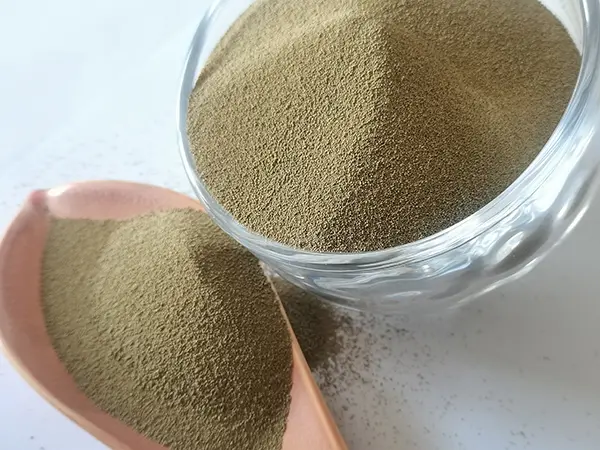Sand Sintering A Key Process in Material Science
Sand sintering is an essential process in material science, particularly in the fields of ceramics and metallurgy. It plays a critical role in transforming loose particles of sand into a solid mass through the application of heat and pressure. This technique has various applications, from construction materials to the production of advanced ceramics, emphasizing its importance in both traditional and contemporary industries.
At the core of sand sintering lies the understanding of particle interactions. When sand particles are heated to a temperature below their melting point, they begin to fuse at their points of contact. This process, known as sintering, results in the formation of a strong bond between the particles, leading to an increase in density and strength. The phenomenon is influenced by several factors, including temperature, time, and the presence of additives. For instance, the addition of certain chemicals can promote better bonding between the particles, enhancing the overall quality of the sintered product.
The application of sand sintering is prominently observed in the production of ceramics. Sintering processes are often utilized to create ceramic tiles, tableware, and artistic items. In these applications, the properties of the final product, such as hardness, porosity, and aesthetic appearance, are significantly determined by the sintering conditions. The ideal combination of temperature and duration is crucial to achieving the desired characteristics in the final ceramic product. Improper sintering can lead to defects such as cracks, warping, or incomplete melting, which can compromise functionality and aesthetics.
sand sintering

Another significant use of sand sintering is in the field of metallurgy, particularly in the production of metal parts through sand casting
. In this process, sand forms a mold for molten metal, which, upon solidification, retains the shape of the mold. The sintering of the sand in the mold helps to prevent erosion and deformation during the metal pouring and cooling process. This results in high precision and quality of the metal parts produced, which is vital in industries such as automotive and aerospace.Recent advancements in technology have opened new avenues for enhancing the sand sintering process. For example, researchers are exploring the use of 3D printing technologies, which allow for the precise layering of sand and binding agents to create complex shapes that were previously impossible to achieve through traditional methods. This innovation not only reduces material waste but also enhances design flexibility, allowing manufacturers to create intricate components that meet specific requirements.
Despite its many advantages, sand sintering also faces challenges. The environmental impact of sand mining for industrial purposes raises concerns about sustainability and ecological balance. Therefore, there is an increasing push toward recycling and reusing materials to minimize the extraction of natural resources. Additionally, scientists are investigating alternative materials for sintering that could lead to greener production methods. This search for sustainable practices is critical in ensuring that the development of sand sintering technologies aligns with broader environmental goals.
In conclusion, sand sintering is a pivotal process in material science with numerous applications across various industries. By understanding the mechanisms involved in sand sintering and embracing innovative technologies, manufacturers can enhance the production of high-quality materials and products. As the industry moves towards more sustainable practices, the future of sand sintering holds great promise, paving the way for both technological advancement and environmental stewardship.
Post time:Aug . 05, 2024 15:27
Next:Exploring the Unique Beauty and Versatility of Heath Ceramics Sand Collection Products
